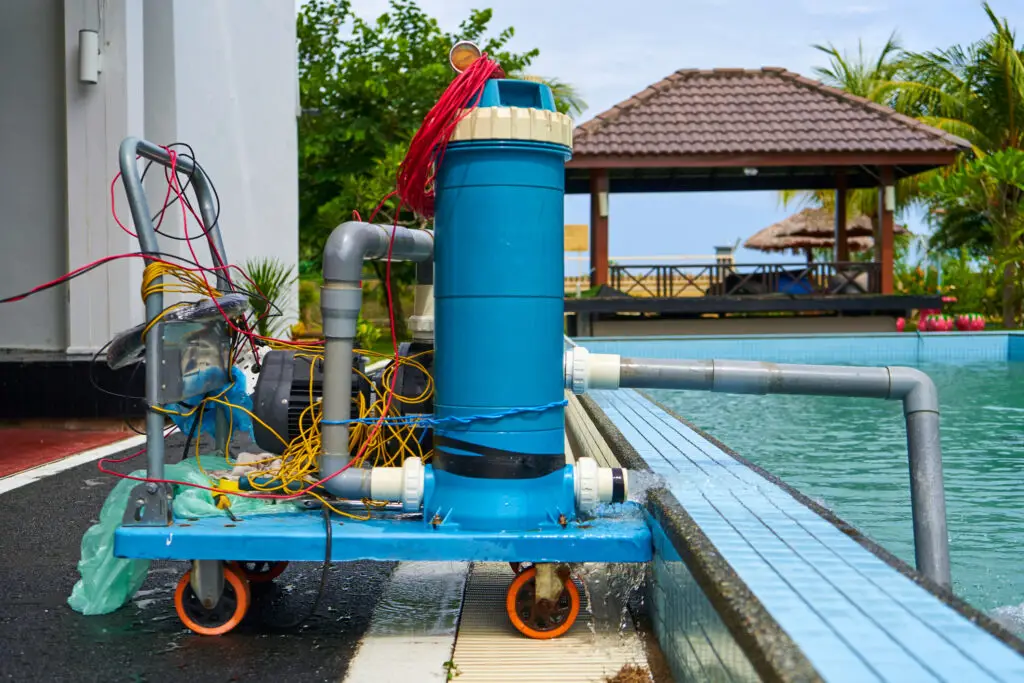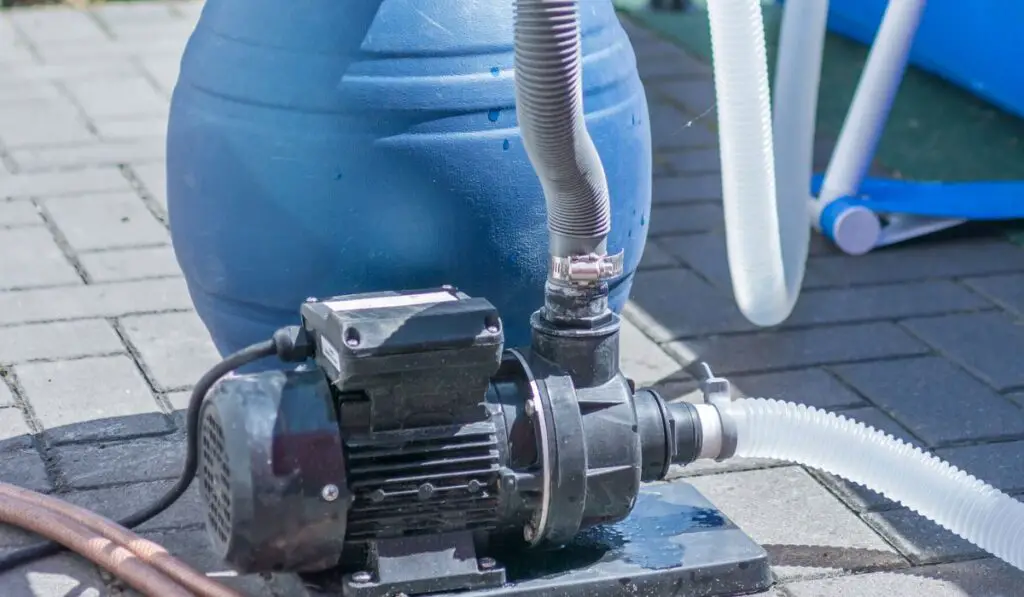There’s no better way to beat oppressive summer heat than by diving into your cool backyard swimming pool. However, this is only possible if you keep a properly maintained pool, complete with a running pump that routinely circulates and filters the water.
A properly installed pump is perfectly safe to run while swimming, and that’s actually how it’s designed to be used. It’s best to run your pump for around eight hours a day to circulate all the water in the pool at least once. Make sure you run the pump after shocking the pool as well.
Some people assume that you need to run your pool pump all day, every day, but the reality is far different. You just need to calculate the length of time that’s ideal for your pool and then turn on your pool pump only for those hours. Let’s look at whether you should turn on your pool pump while swimming, whether it could electrocute you, and how often you should run your swimming pool pump.
Can I Keep My Pool Pump On While Swimming?

It’s perfectly safe to run your pool pump while swimming. In fact, this is actually the best option. Here are a few other reasons why you should keep your pool pump on while swimming:
Floating debris
Without the pump running, the contaminants in your pool won’t be removed, and it won’t be long before you’re swimming with them. This means that bugs, leaves, and other debris will circulate within the pool during your swimming session.
For this reason, it’s better to turn on your pool pump around 10 minutes before you dive in to give the filter and skimmers some time to work.
Dust filtration
Swimming and splashing around in your pool will disturb the dust and debris that’s settled on the bottom. By turning on the pump while swimming, you’ll be able to filter out the contaminants you kick up as you move.
Swimmer’s debris
There are a lot of contaminants that swimmers themselves bring into the pool, such as:
- Suntan lotion
- Dust, sand, and dirt from their feet
- Deodorant
- Hair
If you don’t run your pool pump, the water circulation and filtration system won’t function, resulting in these contaminants floating on the pool’s surface and even settling on other swimmers. However, turning on the pump before diving in can easily fix this problem.
Water features
Of course, in pools designed with built-in features like deck jets, spas, or waterfalls, then you’ll need to turn on your pool pump to allow them to function. There’s no point in having all these aesthetic features if you just switch them off before going into your pool.
Can a Pool Pump Electrocute You?
The answer to this question depends on the type of pump and pool equipment you have. If you have a properly installed or bonded pump, then it’s perfectly safe (and actually recommended) to turn it on while swimming.
However, if you have a storable pool and a pump that plugs into a non-GFCI-protected outlet, then make sure you never turn it on while swimming.
Protection from Electricity in the Pool
Even if you don’t have non-GFCI-protected outlets, it’s better to take a few precautions. If you have a strange, DIY setup or you’re just not comfortable with all the electricity use around your pool to power the pump, then you can purchase devices that use flashing lights and warning alarms to alert you if there’s an electrical current in the pool you’re about to enter.
To be clear, this isn’t a common concern and it’s not a high risk in general, but, again, if you DIYed some of your setup and you think there’s some added risk here, then there are some ways to manage that.
It’s also essential to know the location of the power shut-off switch and how to safely use it. Here’s a more in-depth look at how you can prevent an electric shock death or injury while swimming in your pool:
- Install an electrical voltage monitoring device in your pool, like the “Shock Alert” (on Amazon). This will tell you whether the water in your pool has been electrified because of an electrical current. A defective pump can release an electrical current into the water, making it extremely dangerous to swim in.
- Don’t enter the water if the device starts blaring warning indicators or flashing red lights. The beeping and flashing will intensify as the tool moves closer to the main electrical current or voltage source, helping you pinpoint the exact cause of the problem.
- Make sure that you and everyone in your family know the exact location of all the circuit breakers and electrical switches that power your swimming pool equipment. Remember to make everyone familiar with how to switch off the power in case of emergencies.
- Don’t enter the swimming pool if the pool pump or any other piece of equipment is faulty or not working properly.
- Make sure you only use GFCIs or ground-fault circuit interrupters with your pool pump.
- Confirm that your swimming pool, pump, and all other related electrical components have been checked by an experienced, qualified, and licensed electrician.
- Make sure all pool equipment complies with the National Electrical Code and all other applicable safety codes.
How Often Should You Run a Swimming Pool Pump?

In order to answer this question, you first need to determine the total volume of your pool. In simpler words, the total gallons of water your swimming pool holds.
The exact number is already mentioned in the paperwork, but if you don’t know, you can easily calculate it by the shape of your swimming pool.
Here are a few formulas that can help calculate the volume of your pool (all measurements are in feet):
- Total pool gallons for rectangular pools = 7.5 x average depth x width x length.
- Total pool gallons for round pools = 5.9 x diameter x diameter x average depth.
- Total pool gallons for oval pools = 6.7 x average depth x width x length.
Once you know the number of gallons your swimming pool holds, you can determine the turnover rate. This is the total number of hours it takes for the water in your pool to pass through the filter.
Here’s the formula you can use to calculate your pool’s turnover rate:
GPH or gallons per hour that need to be circulated = Pool volume / 8.
Your pool pump might measure the turnover rate by GPM (gallons per minute) instead of GPH. To convert it to GPH, you can simply use this formula:
GPM x 60 = GPH.
When Should I Turn On My Pool Pump?
Once you calculate the turnover rate, make sure the rate of your pool pump matches the speed. It’s not a problem if it circulates the water a bit faster, but avoid using a pump that pumps water below the required speed for your swimming pool.
It’s important to turn over the water in your pool at least once every day, so your pump should run for around eight hours a day. However, there’s no need to run the pump consecutively. You can just turn it on for four hours in the morning and then run it for another four in the late evening.
It’s also advisable to run the pool pump after adding chemicals. For example, if you’re planning on
your pool, make sure you do it at night, so the UV rays don’t burn off all the chemicals.
This also means that you’ll have to run the pump at night after shocking so that the chemicals are properly dispersed in your pool.
